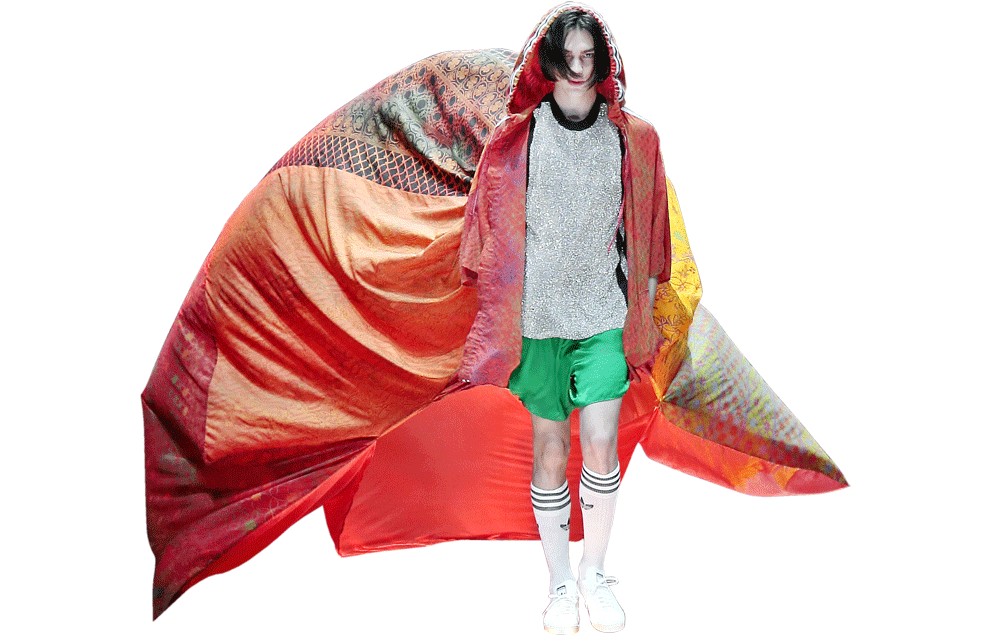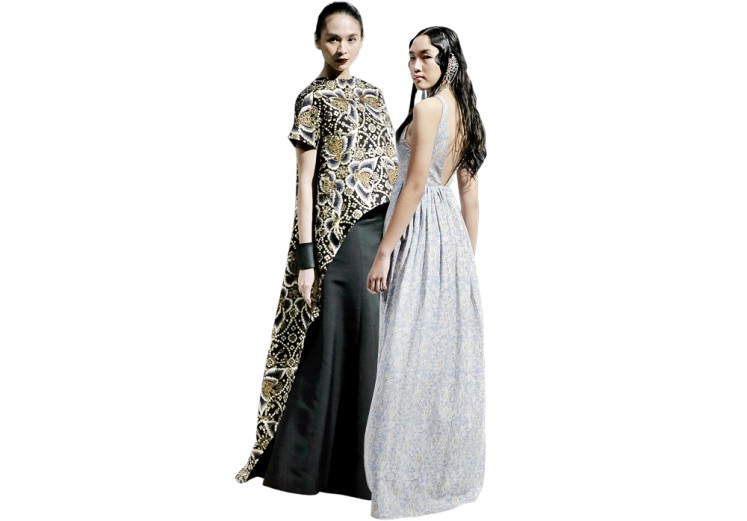Popular Reads
Top Results
Can't find what you're looking for?
View all search resultsPopular Reads
Top Results
Can't find what you're looking for?
View all search resultsBatik still striving to cement a place in fashion
The ancient art of wax-resistant dyeing known as batik is synonymous with Indonesia.
Change text size
Gift Premium Articles
to Anyone
R
enowned designer Edward Hutabarat once likened batik to “a beautiful remnant of a civilization” and called it the textile of Indonesian culture.
“The batik industry has been developing well in the last decade because we continue to train young batik artisans who are very well-versed in their art,” Edward told The Jakarta Post on Monday.
It’s been nearly 10 years since batik was inscribed by UNESCO as an intangible cultural heritage, freeing it from the domain of elders who wear it to stuffy, formal events.
Yet, the traditional textile has yet to achieve a firm foothold in the sartorial choices of young Indonesians in the face of cheaper products.
“The market is too saturated with batik, so people tend to think that authentic batik can come across as expensive for no reason,” said final year fashion major Canissia Leo Bunga, who is currently doing her thesis on local textiles.
She found that people who think batik is expensive do not fully comprehend and appreciate the cultural value and the long process required to create batik.
“Based on the research that I did for my thesis, many local fashion businesses who make modern clothes are more successful than those who specialize in local fabrics, because customers are apparently looking for cheaper versions of high street brands,” Canissia said.
When one takes into account the painstaking process of creating batik, a premium is to be expected.
Iwan Tirta Private Collection X Kraton Auguste Soesastro (Left), Batik Berkah by Barli Asmara (Right) (Courtesy of Plaza Indonesia Fashion Week/-)The traditional handmade technique, or batik tulis, sees the artisan draw the intricate pattern on both sides of the fabric, a process that can take months to complete for finer results.
Because of the process alone, a piece of batik tulis fabric can fetch prices well into the millions, with ready-to-wear clothing cut from batik tulis even more expensive due to the care needed to ensure the patterns look seamless on the finished garment.
Alternatively, the method of batik cap (stamped batik) is also used, yielding a more even distribution of patterns at a faster pace than batik tulis, at the cost of losing the small imperfections that so defines the latter.
It’s likely due to these high costs that buyers then seek for more economical alternatives, the so-called printed batik, which, despite what its name might imply, is not authentic batik as it is simply batik patterns printed on regular fabric.
Despite the ubiquity of batik-patterned fabrics and clothing, traditional capand tulis batik are still considerably represented in the Indonesian fashion industry, as championed by renowned brands that showcase their designs.
Batik was also the highlight of several labels that graced the ninth Plaza Indonesia Men’s Fashion Week (PIMFW) in Central Jakarta, which presented the latest collections of 19 homegrown and international designers from Sept. 24 to 28. The event opened with the latest batik pieces from Alleira Batik X Michael Ong, Parang Kencana and Bateeq.
Meanwhile, in the Batik Exposé held at Galeries Lafayette in Pacific Place, South Jakarta, on Sept. 27, Galeri Batik Jawa showcased a line of natural indigo-dyed clothes and silk scarves fit for a summer soiree, featuring traditional patterns such as Sekar Jagad, Kawung and Parang, each carrying their own distinct message and meaning.
Another label, POPULO Batik, decidedly took a different approach by creating its own patterns, creating a more contemporary spin on batik.
POPULO Batik’s latest collection, titled “Tattoo”, was done in collaboration with Berlin-based tattoo artist Tobias Vetter and hairstylist Viktor Leske, resulting in original patterns featuring playful elements like umbrellas, combs and abstract-looking veins contrasting against deep, almost black navy hues.
Bateeq (Courtesy of Plaza Indonesia Men’s Fashion Week/-)The brand’s marketing director Karina said these patterns were designed in a way that would attract the younger generation who would not otherwise wear batik.
“Of course, there is still the issue of price. All of our batik use the cap method with indigo dyes, so it’s hard for us to push down on prices when the batik process itself is the most complicated step,” Karina said, adding that POPULO Batik’s fabrics can take around a week to finish.
Even when batik becomes exclusionary due to its prices, the government continues to promote the textile through initiatives like National Batik Day, held on Oct. 2 each year to its inclusion as a UNESCO national heritage in 2009. As that day also fell on a Friday, the then-administration also sent a request to government offices as well as private companies for all their employees to wear batik on Fridays.
Gradually, batik was no longer the domain of elders wearing them to formal events, as employees and students found a way to wear their culture on their sleeves — literally.
Agatha Aprilia, a fashion school graduate and a fashion designer who runs her own eponymous brand, said she gained a newfound respect for batik after learning the arduous process behind its creation.
“It’s not easy to create batik, and the process takes a long time. It can also intensely pollute the environment if chemical dyes are used. Even when there’s a more sustainable method to producing batik, it still creates waste even in reduced forms,” Agatha said.
She said she would like to further explore batik for her designs, but has yet to find an artisan with whom to collaborate.
“I want the patterns to be from myself. Lots of designers create their own pattern, so there’s a sense of modernity instead of using traditional patterns, which are worn on special occasions due to the meaning behind them,” Agatha added.
For design school graduate Putriadinda Kirana, she believes buyers should support local artisans whenever they can by choosing authentic batik if they can afford it.
“I also want to see young fashion designers modernize batik because I love wearing batik, but I feel like some of the good ones are made into very gender-biased pieces. I want to wear my dad’s gold silk batik shirt but it’s very boxy and won’t work on my figure,” she said.
Putri, who hails from Bali and mainly prefers Balinese songket designs over well-known Javanese batik, said batik is a good representation of Indonesian culture as a whole.
“Traditional patterns are just so good and Indonesians need to get in on this, like right now.”













